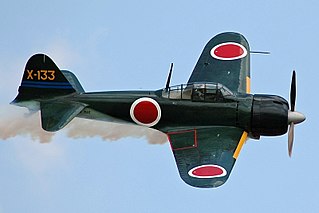
The Mitsubishi A6M "Zero" is a long-range carrier-based fighter aircraft formerly manufactured by Mitsubishi Aircraft Company, a part of Mitsubishi Heavy Industries, and was operated by the Imperial Japanese Navy (IJN) from 1940 to 1945. The A6M was designated as the Mitsubishi Navy Type 0 carrier fighter, or the Mitsubishi A6M Rei-sen. The A6M was usually referred to by its pilots as the Reisen, "0" being the last digit of the imperial year 2600 (1940) when it entered service with the Imperial Navy. The official Allied reporting name was "Zeke", although the name "Zero" was used colloquially as well.
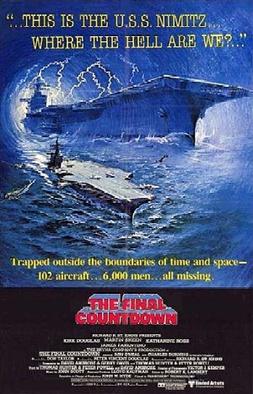
The Final Countdown is a 1980 American science fiction war film about a modern nuclear-powered aircraft carrier that travels through time to the day before the December 7, 1941, attack on Pearl Harbor. Produced by Peter Douglas and Lloyd Kaufman and directed by Don Taylor, the film contains an ensemble cast starring Kirk Douglas, Martin Sheen, James Farentino, Katharine Ross and Charles Durning.

Saburō Sakai was a Japanese naval aviator and flying ace of the Imperial Japanese Navy during World War II. Sakai had 28 aerial victories, including shared ones, according to official Japanese records, though he and his ghostwriter Martin Caidin claimed much higher numbers.
Martin Caidin was an American author, screenwriter, and an authority on aeronautics and aviation.

The Mitsubishi A7MReppū was designed as the successor to the Imperial Japanese Navy's A6M Zero, with development beginning in 1942. Performance objectives were to achieve superior speed, climb, diving, and armament over the Zero, as well as better maneuverability – all parameters that were ultimately achieved towards the end of its development in 1945. However, limitations on Japanese industry towards the end of the war prevented the A7M from ever entering mass production or being deployed for active duty, and it never saw active service. Its Allied reporting name was "Sam".
A samurai is a member of the Japanese warrior caste.
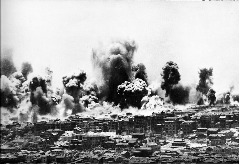
The bombing of Chongqing, from 18 February 1938 to 23 August 1943, were massive terror bombing operations authorized by the Empire of Japan's Imperial General Headquarters and conducted by the Imperial Japanese Army Air Service (IJAAF) and Imperial Japanese Navy Air Service (IJNAF). Resistance was put up by the Chinese Air Force and the National Revolutionary Army's anti-aircraft artillery units in defense of the provisional wartime capital of Chongqing and other targets in Sichuan.
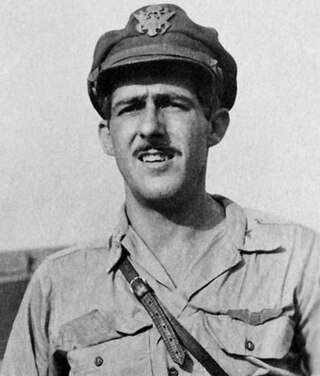
Thomas Buchanan McGuire Jr. was an American United States Army major who was killed in action while serving as a member of the United States Army Air Forces during World War II and posthumously awarded the Medal of Honor. He was one of the most decorated American fighter pilots and the second highest scoring American ace of the war.
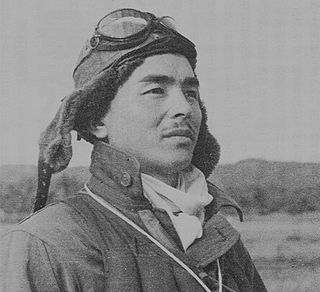
Lieutenant Junior GradeHiroyoshi Nishizawa was a Japanese naval aviator and an ace of the Imperial Japanese Navy Air Service during World War II. Nishizawa was known to his colleagues as 'the Devil' for his breathtaking, brilliant, and unpredictable aerobatics and superb control of his aircraft while in combat. He was a member of the Tainan Kōkūtai's famous "clean up trio" with fellow aces Saburō Sakai and Toshio Ōta and would see action in the New Guinea campaign as well as in the aerial battles over Guadalcanal and over the Solomon Islands. He was killed in 1944 during the Philippines Campaign while aboard an IJN transport aircraft. It is possible that he was the most successful Japanese fighter ace of the war, reportedly telling his last CO that he had achieved a tally of 86 or 87 aerial victories- post war he was linked with scores of 147 or 103, but both of these scores have been considered inaccurate.
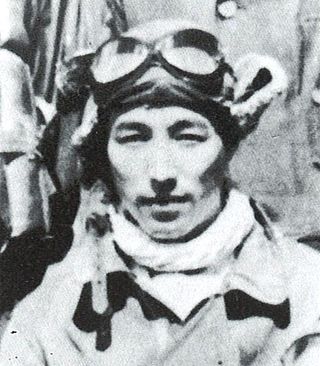
Toshio Ōta was a World War II Japanese fighter ace. In early 1942, at the age of 22, he flew a Mitsubishi A6M Zero with the Lae-based Tainan Air Group. There the young petty officer, 1st class became one of the so-called "Clean-up Trio" of Japanese aces, along with his squadron mates Saburo Sakai and Hiroyoshi Nishizawa.
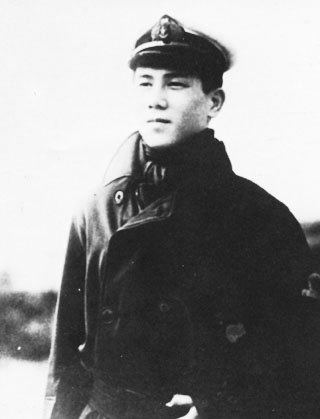
Lieutenant CommanderJunichi Sasai was a Japanese naval aviator and fighter ace of the Imperial Japanese Navy during World War II. Sasai was killed leading his fighter squadron during an attack on Henderson Field during the Battle of Guadalcanal.

James Julien "Pug" Southerland II was a United States Navy fighter pilot during World War II. He was an ace, having been credited with five victories, flying Grumman F4F Wildcats. He was awarded the Silver Star, Distinguished Flying Cross twice, and the Purple Heart.
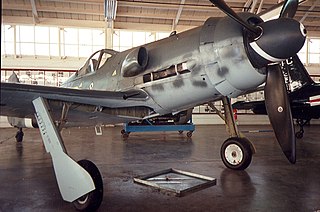
The Champlin Fighter Museum was an aircraft museum located at Mesa, Arizona. It specialized in airworthy World War I and World War II fighters. After 22 years of operation, the Museum was closed on May 26, 2003, and its collection was moved to the Museum of Flight at Seattle's Boeing Field.

Kenji Okabe was an ace fighter pilot in the Imperial Japanese Navy (IJN) during World War II. Participating in many of the Pacific War battles and campaigns as a member of several units, Okabe was officially credited with destroying 15 enemy aircraft. Okabe was credited with shooting down eight enemy aircraft on 8 May 1942 during the Battle of the Coral Sea, the IJN's official record for the number of aircraft destroyed in a single encounter. He is famous for his strong opposition to the kamikaze attacks, rare in IJN at the time. Okabe survived the war.

The Tainan Air Group was a fighter aircraft and airbase garrison unit of the Imperial Japanese Navy (IJN) during the Pacific campaign of World War II. The flying portion of the unit was heavily involved in many of the major campaigns and battles of the first year of the war. The exploits of the unit were widely publicized in the Japanese media at the time, at least in part because the unit spawned more aces than any other fighter unit in the IJN. Several of the unit's aces were among the IJN's top scorers, and included Hiroyoshi Nishizawa, Saburō Sakai, Junichi Sasai, Watari Handa, Masaaki Shimakawa, and Toshio Ōta.

Kaneyoshi Muto was a Japanese naval aviator and flying ace known for his great skill in fighter aircraft. Fellow ace Saburō Sakai called him "a genius in the air."

Winged Samurai: Saburo Sakai and the Zero Fighter Pilots is a 1985 book by Henry Sakaida dealing with the wartime history of Saburō Sakai and other Imperial Japanese Navy Air Service pilots who flew the Mitsubishi A6M Zero. It was published by Champlin Fighter Museum Press.
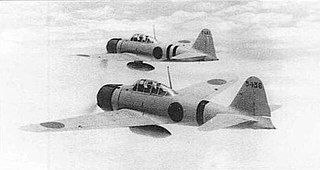
The 12th Air Group was a unit of the Imperial Japanese Navy Air Service (IJNAS) during the Second Sino-Japanese War that operated mainly in the campaigns in the Central China.
















